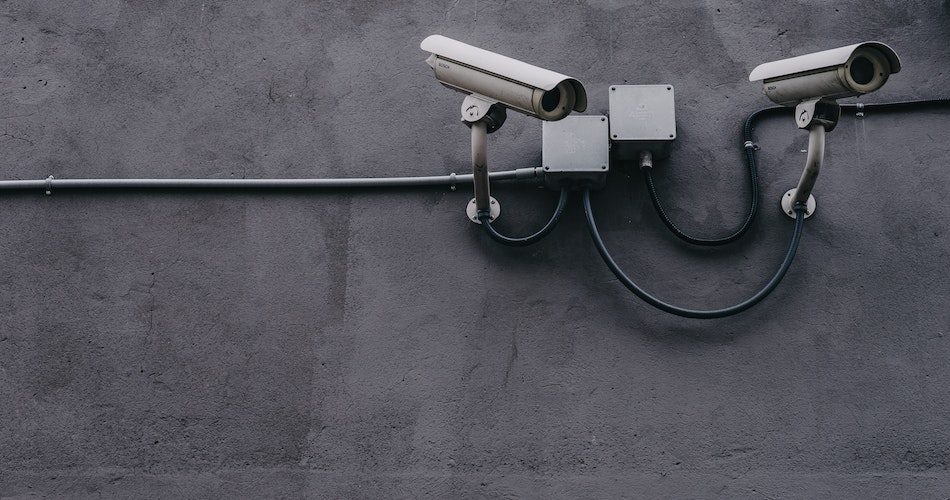Modern workplaces are self-organized and flexible, but managers must motivate employees to self-monitor their work. Employee control may seem harsh, but it is more about maintaining healthy workplace communication and solving employee problems.
Why is Employee Control Required?
These things might happen in organizations that lack proper systems for employee control.
Low Productivity
It is easy for employees to get demotivated and procrastinate about their work when the managers are away. On the other hand, some employees will always perform, irrespective of whether or not they are monitored.
Employee control measures are essential for employees who are not as highly motivated. External control is required to maintain higher levels of work efficiency and productivity.
Top Performing Employees will go Unnoticed
Managers should practice employee control to notice the top-performing employees. Without monitoring them, it would be hard to distinguish between dedicated and less-dedicated workers.
Which Employees May Need to be Monitored?
Employee control is a must to check these types of employees:
-
Employees who have been promoted to handle a new task or project
-
Employees who have done well in the interview but have become reluctant after joining
-
Well-performing employees who are not meeting the expectations due to personal reasons
-
Employees who are known to bully their colleagues
-
Workers who may be harassing their subordinates
-
Workers who may be indulging in unethical practices
-
Employees who might be violating the rules of the organization
-
Employees who are damaging the company’s values and culture
Managers tend to be lazy
Most companies have a structure where CEOs hold the department heads accountable for the performance of their teams. Due to a vertical chain like this, managers’ performance tends to be neglected.
Without proper employee control systems, managers could get demotivated. Also, tracking the managers who fail to deliver consistently would be hard. These issues can hamper the long-term progress of a company where only the department heads report at the management level:
-
The department heads might include superficial things in their report to create a good impression on the CEO or to receive a bonus.
-
They might hide something to make the performance of their teams look good.
-
Also, the department heads may not have all the details about the highly motivated employees. They might indulge in favoritism and make unreasonable calls, like firing good employees without giving a proper reason.
-
They might not monitor the processes closely, and non-dedicated managers will not provide them with timely updates. It would ultimately result in work negligence, which is detrimental to a company’s overall growth.

How do Employee Control Systems Help?
Controlling employees through efficient control systems would bring these changes in the organization:
Complete awareness about the subordinates
The managers will be aware of the performance of each of their employees. They will be able to check on the employees who are neglecting their duties or tarnishing the company’s reputation intentionally or unintentionally. They would know about the employees who deserve to be recognized and promoted.
Motivates Employees
Managers who exercise employee control know when the spirit of their employees gets low. They can motivate them and highlight the achievements of dedicated and top-performing employees to boost their morale.
Teaches Discipline
Managers can make employees realize the importance of discipline and quality work. The employees who are not following the discipline set by the organization can be held accountable, and some strict action can be taken against them to set an example for others. Similarly, disciplined employees can be appreciated or provided with some monetary benefits to motivate others to act responsibly.
All these above benefits cannot be achieved without controlling employees via consistent supervision.
Common Types of Employee Monitoring
Managers might get an employee monitoring application or some form of employee performance tracker to get better control over the employees. As technologies have been highly developed recently, managing floors physically is no longer required. Cameras and other technologies are available for monitoring employees closely. These are some common monitoring types or employee monitoring methods that are exercised in today’s times:
Keycards
In this employee control system, every employee is provided with a card with an integrated chip. The employees can leave their departments or cabins only after swiping their card at the door, which is fitted with a scanning device. This method allows the managers to monitor how long the employees have left the building or are away from work. These keycards are also used to register attendance and work timings of the employees.
Video Surveillance
Video surveillance systems are employed to ensure the security of the office premises. However, employers can also use these systems to detect employees who engage in fraud, theft, or property damage.
Employee monitoring solutions
Though video surveillance systems are integrated for safety reasons, they cannot help track performance. Companies must use more sophisticated employee tracking software to measure their performance through several metrics like punctuality, output, discipline, etc.
Many tracking systems and tools have been developed for employee tracking in recent years. Some do the primary task of tracking time, whereas others are designed to keep track of all the employee activities.
An employee control or monitoring system allows companies to increase productivity, manage time, and complete projects promptly. They can also have features for monitoring the costs of individual projects.
Employee monitoring systems use computer applications and programs to:
-
Monitor the apps and websites used by individuals and teams
-
Track the time spent by employees on productive and unproductive tasks
-
Tracking attendance through communication tools like Slack and MS Teams
-
Generate activity logs to calculate the active and idle time of every employee
-
Get access to raw data related to employee performance
Myths about Employee Control Systems
Monitoring work is unlawful
Some employees might feel that monitoring their work is an unlawful activity. However, every employer has the right to monitor their employees and inform them about their duties.
Monitoring is only for employees
Employers must realize that monitoring their employees is not enough. They must also monitor the supervisors, managers, team leaders, and all the staff members. Even the work of the department heads should be monitored whenever required.
Monitoring is only helpful for the management
It is not true that only the management gets valuable insights and ideas by monitoring employees. Some employees cannot work at their fullest potential if they are left to handle all the things by themselves. They need to feel that someone is there to look after them or their work to deliver the best results.
Monitoring workers is a challenging task
Monitoring workers is not tough if the right tools and technologies are implemented. Today, we have access to all the software and applications that can keep track of employee work. Therefore, the management need not get stressed while creating a team monitoring plan.
Employees get irritated through control
It is a myth that employees react negatively or get frustrated through the control systems. It is the way that the employee control system is implemented that can bother them.

Mistakes to Avoid with Employee Control Measures
Wrong ways of exercising employee control can be counterproductive for an organization. The mistakes that managers should avoid while monitoring their employees are given below:
Punitive control
A manager cannot behave like angry parents who get unreasonably harsh with their kids for silly reasons. Some managers behave rudely toward employees, especially when they struggle to perform. They stop their incentive bonus and fine them for coming late. Also, they try to normalize working after office hours.
Due to their irrational thinking, they might encourage favoritism and lobbying. While employee control is required, managers who reprimand the employees in rage aren’t required at all.
Micromanaging the employees
Micromanagement means practicing employee control at every stage of the process. Each team member is monitored closely and has to report on their daily progress. Micromanaging employees can frustrate employees because they don’t require someone to direct them at every step while working. Managers who micromanage their teams tend to be critical about things that don’t matter.
For example, the employees who check their phones for some important update from family might be called and asked to justify their actions. Instead of questioning them about it, they must ask if everything is fine with their family. Managers who don’t engage in healthy conversations with their employees affect the collaboration and harmony of their teams.
Micromanagement is not the right way of controlling employees. The managers can monitor the activities of their employees without being noticed. They can take details from their employees at regular intervals in the name of improving the company’s strategy.
Being partial towards some employees
Managers should not favor certain employees because they like them. They must be impartial while allocating duties, recognizing efforts, and promoting deserving employees. At the same time, they must penalize the employees for their mistakes without getting partial. However, there can be some exceptions to this.
Imagine that two employees have violated a company rule. The management will be a little lenient towards the employee who has been serving them for years dedicatedly compared to a new employee who does not have a proven track record.
Best Practices to Adopt Employee Control Systems
Here are the attributes that can help managers to exercise the required level of employee control:
Be transparent
The managers should be transparent when it comes to the rules and regulations of the organization. They must inform the employees that they are being monitored and that performance will be measured while providing them with salary hikes, promotions, and incentives. They must also be upfront about the tools they will use to monitor their work and performance.
Each employee should be provided with a document that contains all the monitoring rules and the consequences for specific violations and actions. Also, they must thoroughly understand the working conditions and workplace regulations.
Be predictable
Managers should not keep adding new rules to their employee control system without any prior notice. If new rules are to be added, they must explain the reasons. It will make the employee control system consistent and stable. Employees will trust the system and feel safe while working under surveillance.
Don’t intervene unnecessarily
Managers should not intervene in the processes without reason. Their supervision should not create a feeling of tension or work stress in the workplace.
Look at the final picture
Companies should not follow the ‘punish one to teach others’ policy. At the same time, they should not reward anyone without sufficient reasons. Managers should always look at the bigger picture and take actions that benefit everyone in the long run.
Be consistent
Once an employee control system is created, the managers should implement it consistently. Loosening the grip or tightening it unnecessarily isn’t required. It can lead to a total collapse or a severe implication that may alter the employees’ minds or threaten them.
Automate employee control
Automating certain aspects of the employee control system will help maintain efficiency and consistency. Automating activities like open tasks, punctuality, and time required to close tasks are essential for managing more extensive processes.
Automation saves time, and managers can use them to analyze the performance of teams and individuals. Managers can create charts that help employees follow the rules using the data obtained through automated tools. It also negates the need for direct intervention and involvement, making the processes smoother and more efficient.
Conclusion
In general, employee control systems can have both positive and negative effects on employees and organizations. On one hand, control systems can help organizations achieve their goals by ensuring employees are working efficiently and effectively, and by minimizing mistakes and errors. On the other hand, control systems can lead to micromanagement, reduced autonomy, and decreased job satisfaction among employees.
It is important for organizations to strike a balance between control and autonomy, and to ensure that their control systems are transparent, fair, and respectful of employees. Additionally, organizations should communicate clearly with employees about the purpose and benefits of their control systems, and solicit feedback from employees to continuously improve and refine their systems. Ultimately, a well-designed and implemented control system can help organizations achieve their goals while also promoting a positive and productive work environment for employees.






